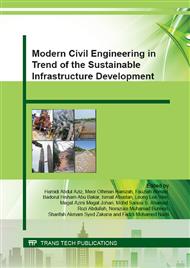p.472
p.478
p.484
p.490
p.496
p.501
p.507
p.513
p.519
Performance of some New Bacterial Isolates on Biodegradation of Libyan Light Crude Oil Using Agro-Industrial Wastes as Co-Substrates
Abstract:
Some unfortunate accidents of large amount of oil hydrocarbons have been reported in Mediterranean Sea which has caused severe environmental damage to the area. To safeguard the Libyan coastline and marine ecologysince thousands of human activity such as fishing largely depends on the healthycoastal environment.Twenty crude oil-degrading bacterial isolates were obtained from oil-contaminated sites at Al Hariga Oil Terminal and Nafoora Oilfield. Based on a high growth rate in crude oil and hydrocarbon degradation efficiency, two isolates were selected from the twenty isolates for further analysis. The nucleotide sequence of 16S rRNA gene showed that these isolates are likely Pseudomonas aeruginosa andKocuriapastrius. One of the isolates is a potential Gram-negative Pseudomonas bacterium based on petroleum hydrocarbon degradation efficiency and potent emulsifying activity; thus, this isolate is identified as P. aeruginosa NAF1; the other isolate K. pastrius SAR3 is identified as a Gram-positive bacterium. Corn steep liquor (CSL) and solid waste date (SWD) were used for an in situ molasses technique to enhance bacterial growth and biodegradation efficiency. P. aeruginosa NAF1 exhibited 70% and 76% crude oil degradation in 0.2% (w/v) CSL and SWD in 28 d, respectively. Likewise, K. pastrius SAR3 yielded 68% and 70% crude oil degradation in 0.2% (w/v) CSL and SWD in 28 d, respectively.
Info:
Periodical:
Pages:
496-500
Citation:
Online since:
October 2015
Keywords:
Price:
Сopyright:
© 2015 Trans Tech Publications Ltd. All Rights Reserved
Share:
Citation:


